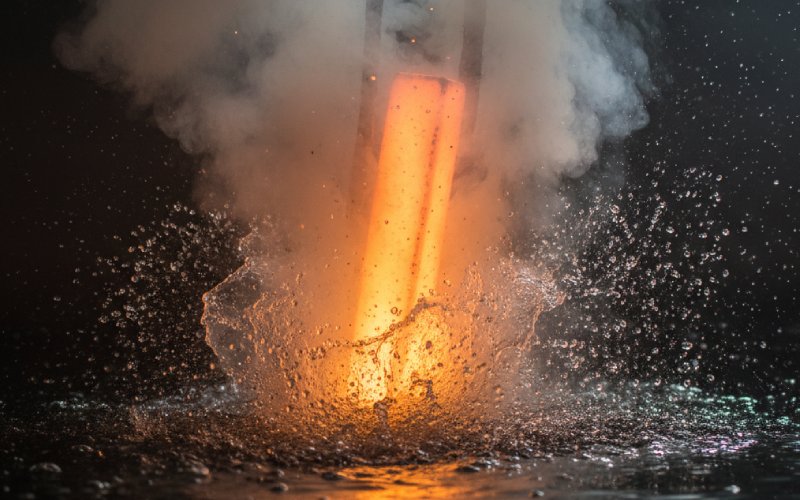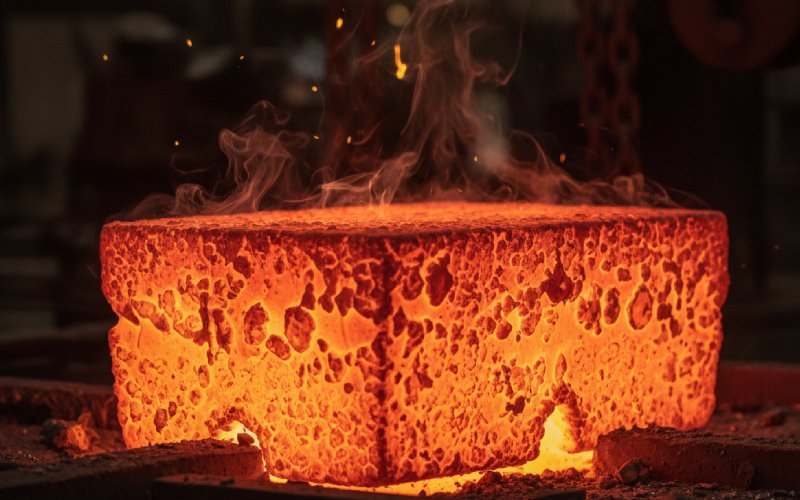Let Istar help you get started on your project with our experience and know-how!
Upload your design files and production requirements and we will get back to you within 30 minutes!

Have you ever thought about what makes a sword strong but not easy to break? Or how a normal piece of steel can turn into a very hard drill bit? The secret is a set of steps called heat treatment. This is a way of using heating and cooling to make a metal better. This article is your easy guide to learning how heat treat works. You will find out how we can make a metal harder, softer, or tougher, just by managing the heat. Keep reading to learn the secrets that change plain metals into great materials.
Heat treatment is a set of steps used to change the way a material looks and acts. The most common material for heat treatment is a metal or an alloy. The method uses careful heating and cooling. By carefully watching how hot the metal gets, how long it stays hot, and how fast it cools, we can change its features. We can make it stronger, tougher, or softer to do a certain job.
You can think of it like baking a cake. You begin with simple ingredients. But the oven’s temperature and how long you bake for makes all the difference. The same thing is true for steel and other kinds of metal. The right heat treatment process can make a normal piece of carbon steel into a part that works really well. This is why heat treatment is very important for making tools, car parts, and almost anything made of metal. It lets us decide how the final product will turn out.
When you see a piece of metal, it looks solid. But on a very tiny level, it is made of small crystals. We call this the microstructure. The way these tiny crystals are put together gives the metal its qualities, like its hardness or its ductility (which is its ability to bend and not break). The steps of heating and cooling change this microstructure.
Heating the metal gives the tiny bits inside the energy to move and form new crystal shapes. Then, the speed of cooling, or the rate of cooling, decides what the final shape will be. A very fast cool, which is called a quench, can lock the tiny bits in place. This makes a very hard but also brittle shape. A very slow cooling lets the tiny bits settle into a soft and more bendy shape. So, by managing the heating and cooling steps, a heat treatment can carefully change the properties of the metal.

There are many different heat treating processes. Most of them can be put into a few main groups. Each one is done for a different reason. Learning about these basic types of heat treatment helps you learn what you can do with a metal or alloy.
Here is a simple table of the most common treatment options:
| Heat Treatment Type | Main Reason | What Is Done |
|---|---|---|
| Hardening | To make the metal much harder. | Heating it up, then a very fast quench. |
| Annealing | To make the metal soft and get rid of stress. | Heating it up, then a very slow cool. |
| Tempering | To make it less brittle and add toughness. | A light heating after it has been hardened. |
| Case Hardening | To harden just the outside of the metal. | Adds things like carbon to the outside. |
These common heat treatments, such as annealing, hardening, and tempering, are the basic ideas for working with metal today. Many heat treatment methods are just slightly different ways of doing these main things.
To harden steel, you must change its microstructure into a form that is very hard. This heat treatment uses heating the steel to a very high temperature. The exact temperature changes based on the kind of steel and its carbon content. The steel is heated to a point higher than its upper critical temperature. This lets the carbon bits mix into the steel.
After the metal is heated and this change is finished, it needs to be cooled down very fast. This is called a quench. The steel is often dipped into water, oil, or a special liquid. This fast cool locks the carbon bits in place. This makes a very hard but also a very brittle structure. This method is great for increasing the hardness of items like tool steel or knives. The purpose of this heat treatment is to get a very high hardness.
To anneal a metal means to make it softer and simpler to work on. The annealing process is like the reverse of hardening. Instead of a fast quench, annealing uses a very slow cooling method. This heat treat method is used to relieve stress inside, soften the metal, and make it easier to bend and stronger. This is usually done after a metal has been cold worked, which can make it hard and easy to break.
There are different ways to anneal. In a full annealing process, the metal is heated to a certain high temperature. Then it is slowly cooled at a set speed. This is often done by leaving it in the furnace to cool down. The anneal process lets the microstructure change back into a more settled and soft state. Other kinds of heat treatment like partial annealing or recrystallization annealing use different heating temperatures and cooling speeds for different outcomes. Annealing is used to get a metal ready for more work to be done on it.
When you harden steel with a quench, you get amazing hardness. But it also causes a big problem: the steel becomes very brittle. A brittle material can break easily like glass if you hit it. This is not good for most tools or parts. This is why the tempering process is so useful. Tempering is a heat treatment that is done after hardening to reduce brittleness.
The process is done by heating the hardened steel to a much lower temperature. It is kept at this heat for a certain time. Then it is allowed to cool, often in the air at room temperature. This soft heating lets some of the locked bits in the microstructure move a tiny bit. It lowers some of the hardness but makes its toughness much better. The higher the temperature used for tempering, the less hard and more tough the steel will be. This lets us make small changes to how the final steel parts work.
Sometimes, you do not need the whole part to be hard. You might want a part that has a very hard surface that doesn’t wear down easily. But you might want the middle to be softer and tougher. This is why we use case hardening. Case hardening is a kind of heat treatment that only hardens the outside layer, or “case,” of a metal part. This makes a hardened surface while the inside of the part stays easier to bend.
There are a few ways this is done. Two common heat treating processes for case hardening are carburizing and nitriding.
When a metal part is made, for example by welding, cutting, or bending, stress can get built up inside. You cannot see this stress. But it can make the part bend or even break over time. A special heat treatment that is called stress relieving can help with this. The purpose of this heat process is to relieve these forces that are built up. It does this without changing the main features of the metal.
To relieve stress, the part is softly heated to a temperature that is below its changing point. It is kept there for enough time to let the metal’s internal microstructure settle down. This also lets the internal stresses spread out evenly. After that, it is cooled down very slowly. This slow cool is very important. It makes sure no new stress is made. This heat treat is a very important step for making sure parts are strong and can be trusted.
Yes, for sure. A heat treating schedule is like a recipe that you follow for a heat treatment. It gives you the exact temperatures, times, and cooling speeds to use for a certain kind of alloy. Different kinds of steel, such as carbon steel, alloy steels, or stainless steel, all need their own special heat treating schedules to get the features you want.
For instance, a high-carbon tool steel will have a very different schedule than a low-carbon steel for building. Even a tiny change in the heating time or the cooling rate can make a large difference in the final hardness and toughness. This is why experts who do heat treatment follow these plans very closely. They use special tools to manage the heating and cooling steps. This helps make sure every part gets just the right heat treat.

We have now learned about the big four: hardening, annealing, tempering, and case hardening. These are the most important parts of heat treatment. They help us make things stronger, soften materials, reduce brittleness, and make a hard surface. These common heat processes are used in all kinds of jobs that work with metal.
Inside these groups, there are many special kinds of heat treatment. For example, a process called normalizing is a type of annealing heat treatment. It is used on cast steel to make a more even microstructure inside. The quenching process also has many different kinds. These range from using plain water to special oils or liquids that manage the cooling rate. If it is for stainless parts or a simple alloy, there is a heat treatment made to make it work its best. The world of heating a metal or alloy to change its features is very big. But these main ideas are what makes it all happen.